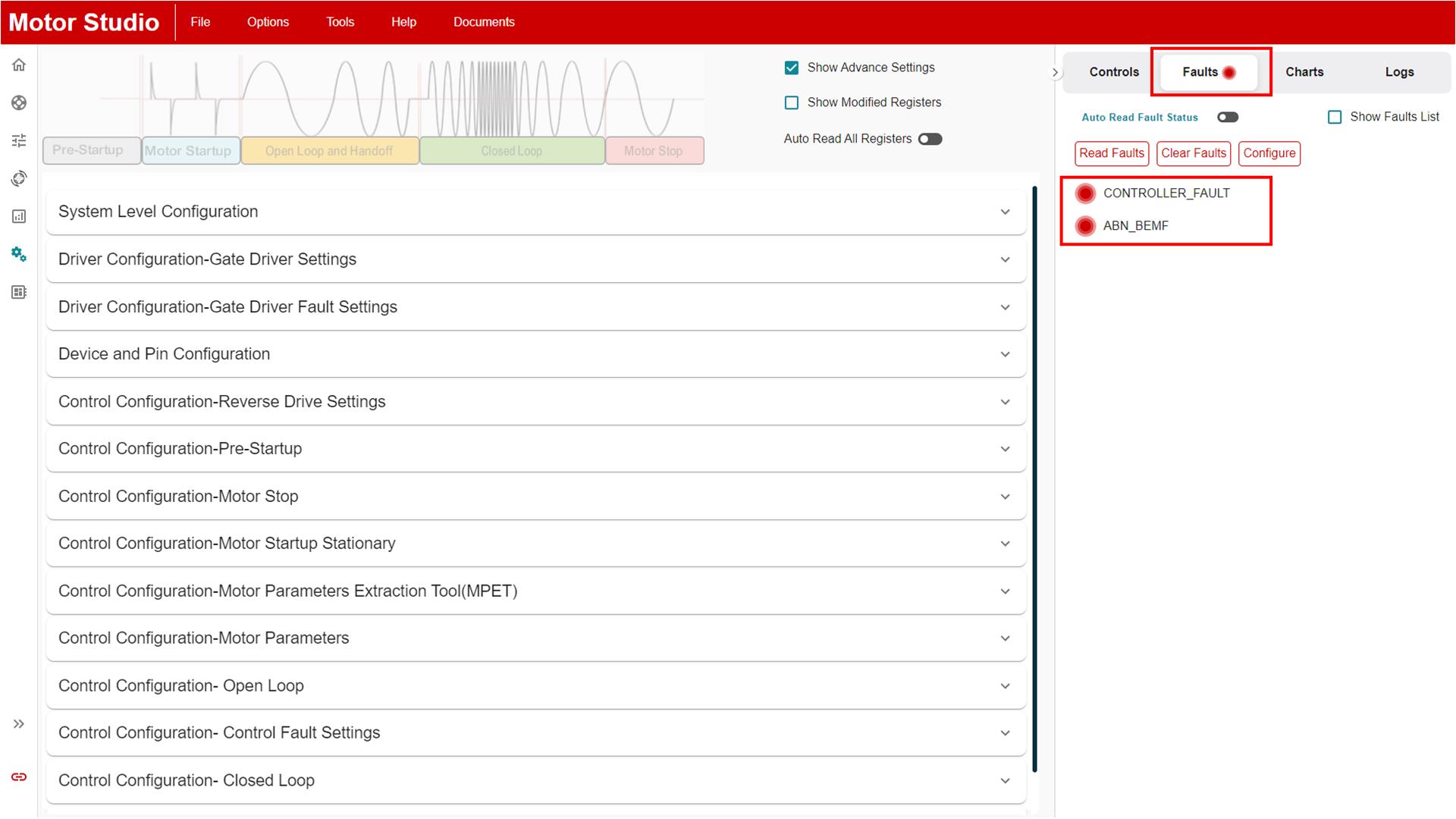SLLU374 November 2024 MCF8329A
6 Fault Handling
To see which fault has been reported by the MCF8329A, go to the Faults tab and check if any faults with red circles appear. If a fault is shown in this tab, see the section below that has a title similar to the reported fault.
 Figure 6-1 Faults Tab
Figure 6-1 Faults Tab